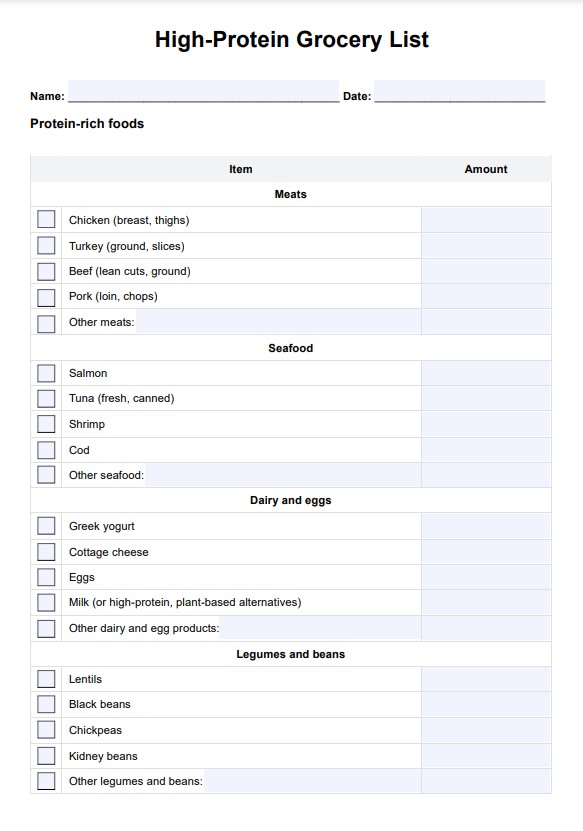High protein foods at the grocery store include meats like chicken and turkey, seafood such as salmon and tuna, dairy products like Greek yogurt, legumes, beans, nuts, seeds, and whole grains like quinoa and oats.

High Protein Grocery List
Explore our High-Protein Grocery List for effective diet planning, featuring diverse protein sources, meal tips, and a free PDF download.
High Protein Grocery List Template
Commonly asked questions
Foods highest in protein typically include lean meats, poultry, fish, eggs, dairy products, legumes, nuts, and certain seeds like chia and flaxseeds. These foods provide essential amino acids vital for muscle growth and repair.
Top 10 high-protein foods for daily consumption include chicken breast, salmon, eggs, Greek yogurt, lentils, almonds, cottage cheese, quinoa, turkey breast, and black beans. These foods can be easily incorporated into various meals throughout the day.
EHR and practice management software
Get started for free
*No credit card required
Free
$0/usd
Unlimited clients
Telehealth
1GB of storage
Client portal text
Automated billing and online payments











